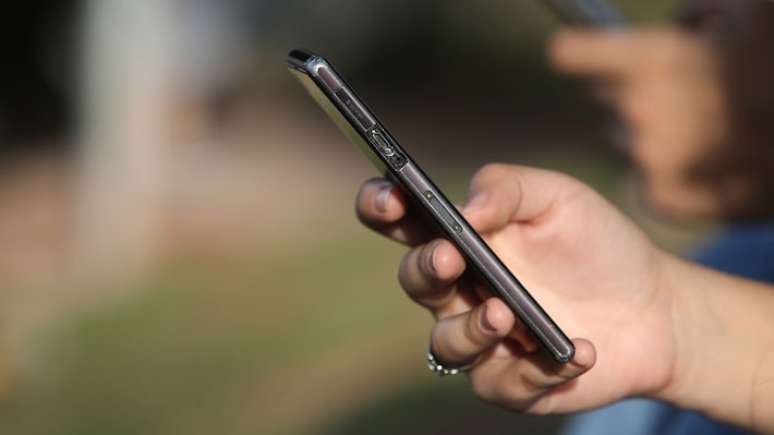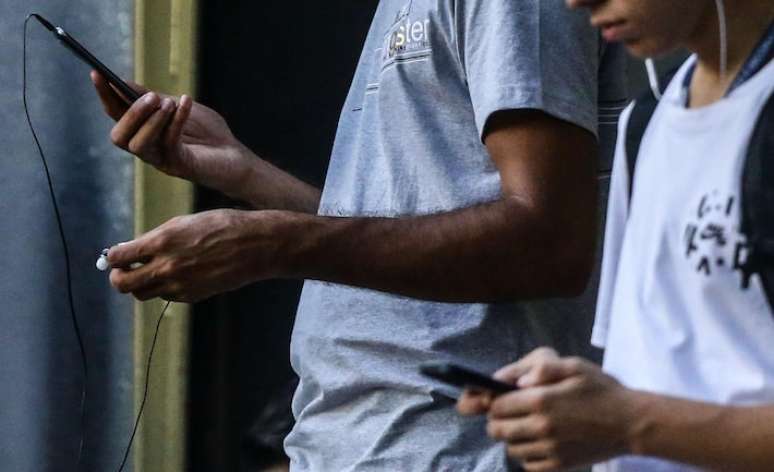Simple tips and lifestyle changes can minimize hand, eye and brain problems
When people warn about the dangers of screen time, they often think about the impact it has on their lives. mental health or in personal relationships.
What about the physical problems that come with holding a metal rectangle in your hand for hours on end? Or holding it close to your face so you can see dimly lit TV programs clearly?
There are so many ways a phone can impact your health, beyond toxic content, that phone manufacturers smartphone are building tools to help neutralize it. Before you suffer from carpal tunnel syndrome, eye strain, or migraines, try a few small changes.
Here are some things experts say you should do differently when using your smartphone, organized by body part.
Your hands
There’s a lot of talk about the right and wrong way to write or sit at a desk, but how should you hold your favorite screen?
The key is to maintain a neutral wrist position, says Lauren Shapiro, assistant professor of orthopedic surgery at the University of California, San Francisco. That means your wrist should be straight or have just a slight bend.
“Bending your wrist, extending it, and holding or gripping it tightly will increase stress and strain on the body,” says Shapiro.
It is recommended to take breaks to avoid prolonged periods of use. Make sure the phone is not too big for your hand and, when possible, opt for hands-free tools, such as voice dictation or a phone call instead of texting.
If you use a stand on the back of your phone to support it, make sure you don’t rest all the weight of the phone on one spot, such as a single finger.
There isn’t enough research to establish a direct causal link between hand injuries and increased phone use, Shapiro says. However, it’s likely that holding your smartphone or tablet incorrectly and too frequently can contribute to problems like thumb arthritis, carpal tunnel syndrome, and tendonitis.
Consult a doctor if you experience numbness or tingling, popping or locking of the fingers, persistent or severe pain or numbness in the hand, arm or shoulder on the side where you hold the phone.
The ideal way to hold a phone might be to not hold it at all. Hold it up or use a stand that doubles as a charger and position it at eye level.
Your ears
Before you start listening to music with headphones, make sure you don’t turn the volume up too high or you risk hearing loss. The National Institute on Deafness and Other Communication Disorders recommends keeping the volume below 70 decibels.
On a the phoneyou can choose the maximum volume in the Headphone Sound & Safety setting. You can also control the maximum volume for a child in the Screen Time controls. On a device AndroidYou can find the options in the Sounds & Vibrations settings.
Your eyes
Staring at a smartphone or tablet screen for long periods of time can cause eye strain. The solution is distance, breaks, and some sunshine.
When you look at your phone, it should be at least 12 inches away from your face to avoid eye strain, says Raj Maturi, a spokesperson for the American Academy of Ophthalmology and an ophthalmologist at the Midwest Eye Institute. Take a break from looking at your screen every 20 minutes, but don’t just stare at the wall. Go outside.
“When you’re outside in bright sunlight, your pupils constrict to a very small size,” says Maturi. “This automatically relieves the pressure in your eyes.”

You can try the 20-20-20 rule, which is taking a 20-second break every 20 minutes to look at something at least 20 feet away from you. You can also take longer but less frequent breaks. No matter how you do it, make sure you find ways to relax your irises and pupils.
In addition to eye strain, too much screen time can contribute to more permanent eye problems, especially in younger users, experts say. There’s not enough evidence yet to link prolonged phone and screen use to increased myopia, but Maturi says the correlation is pretty strong.
Apple has an optional feature called Screen Distance in Settings? Screen Time that alerts you when your screen is too close to your face.
Your heart
Phones were designed to be portable, but they can often keep us inert, glued to our chairs or rotting in our beds.
If phone use is getting in the way of your regular exercise, start scheduling breaks. According to the Department of Health and Human Services, adults should get 2.5 to 5 hours of moderate aerobic activity each week. Short on time? Try 75 minutes of more vigorous activity. Spread it out throughout the week so you get your heart pumping for at least 30 minutes each day.
The benefits of regular exercise are well documented. But it can help reduce the risk of diseases like heart disease, stroke, and some types of cancer. It can also help lower cholesterol, increase energy levels, help with conditions that affect cognition, and even improve mental health.
Dealing with separation anxiety from your phone? Take it with you! Listen to music or a podcast while you walk or text, but keep your phone in your pocket.
Your brain
A screen can trigger tension headaches or migraines in sufferers, according to Charles Flippen II, associate dean of the Center for Continuing Professional Development at the University of California, Los Angeles, David Geffen School of Medicine.
Some of the reasons include insufficient movement, neck position, sensitivity to light, and decreased blink rate, which dries out the eyes.
The solution, as you may have guessed, is to use your device sparingly and take regular breaks. If you’re sensitive to light, you may want to turn down the brightness or avoid looking at a bright screen in a dark room. To avoid straining your neck, hold your phone as close to eye level as possible.
There’s another huge impact our smartphones have on our brains: They’re eating away our sleep. Flippen, the Richard D. and Ruth P. Walter Professor of Neurology, recommends avoiding screens in bed and for at least an hour before bed. If you have to look—and do you look?—turn on settings to minimize blue light, which can suppress melatonin production. On iOS devices, turn on the Night Shift setting. On Android devices, go to your display settings and look for the blue light or night settings.
“To get a good night’s sleep, you need to clear your head of all the leftovers from the day, and the best way to do that is to simply turn off your phone,” says Flippen.
This content has been translated with the help of artificial intelligence tools and reviewed by our editorial team. Learn more in our Artificial Intelligence Policy.
Source: Terra
Ben Stock is a lifestyle journalist and author at Gossipify. He writes about topics such as health, wellness, travel, food and home decor. He provides practical advice and inspiration to improve well-being, keeps readers up to date with latest lifestyle news and trends, known for his engaging writing style, in-depth analysis and unique perspectives.



-qdsqacs9y82p.png)





